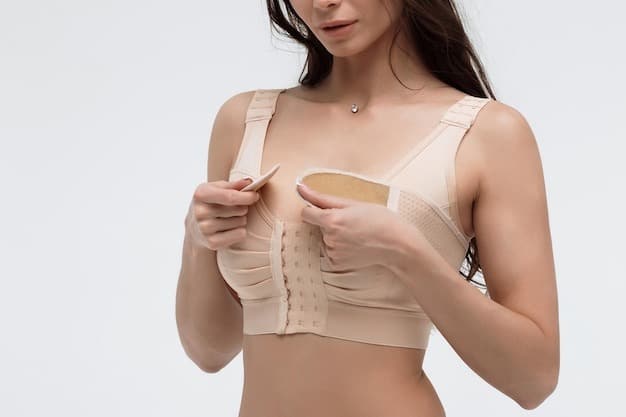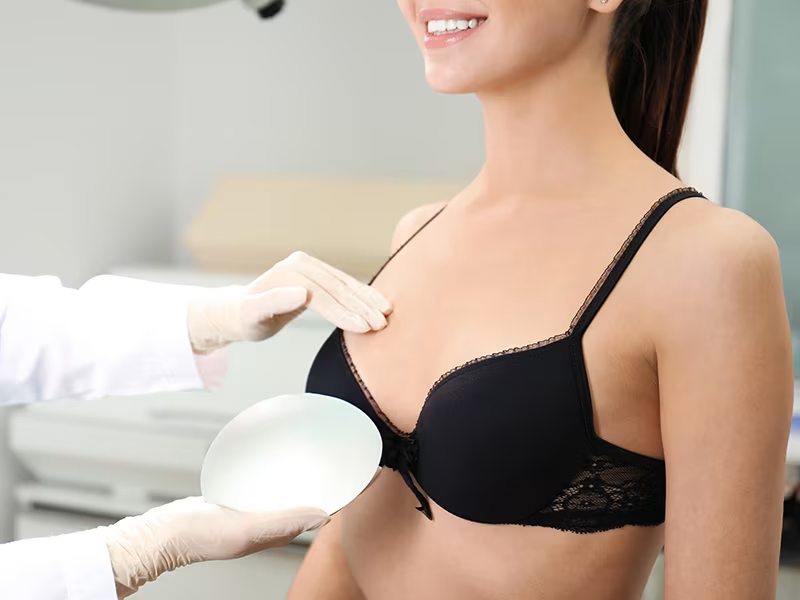Are you wondering what the first week after breast augmentation surgery really looks like? Whether you’re preparing for surgery or recovering now, knowing what to expect can ease nerves and help you heal more confidently.
That first week plays a major role in your overall recovery journey. It’s a time of careful steps, healing, and gradual progress. Let’s explore what you can anticipate during these crucial early days and how you can make the most of your recovery.

What to Expect One Week Post Op Breast Augmentation
In the first week after breast augmentation, it’s completely normal to experience swelling, mild to moderate discomfort, tightness in the chest, and limited mobility. Most patients feel significantly better by Day 7 but still need to take it easy. You’ll likely start with rest and basic post-op care, slowly reintroduce light activities, and attend your first follow-up appointment. Your plastic surgeon’s guidance will be essential to ensure safe healing and optimal results.
The First Week: Breast Augmentation Recovery Timeline
Each day during the first week of recovery brings subtle changes and important milestones. While experiences can vary slightly, most patients follow a fairly consistent pattern. Here’s a day-by-day guide to help you understand what you might expect during your first breast augmentation recovery week.
Day 1: The Immediate Post-Op Phase
On the first day after surgery, grogginess is common as your body recovers from anesthesia. You may experience chills or tightness across the chest. Swelling usually begins, and some patients notice nerve discomfort, like shooting pains—signs that sensation is returning. Pain management is key today. Your care team may use targeted solutions like localized pain pumps instead of heavy narcotics during this initial recovery period. It’s crucial to communicate any discomfort so your pain management can be adjusted to keep you as comfortable as possible.
The Immediate Post-Op Phase…
Day 2: Adjusting to At-Home Recovery
By the second day, you’ll be settling into your home recovery routine. Rest remains a priority, and how you position your body can affect healing. Sleep on your back with your upper body slightly elevated to reduce swelling. Begin monitoring your incisions for redness or unusual discharge, and be alert for signs of infection like fever or persistent pain. Keeping your recovery space calm and comfortable, while staying aware of your body’s signals, helps support safe, steady healing.
Adjusting to At-Home Recovery…
Day 3: Beginning Gentle Activities
Day three often marks a turning point where light movement becomes beneficial. Gentle walks around the house or mild arm movements—keeping arms below shoulder level—can help improve circulation and reduce the risk of blood clots. Avoid any strenuous activity or lifting. Staying hydrated and eating nutritious, protein-rich meals will support the healing process. At this stage, movement should feel restorative, not tiring, so listen to your body and avoid pushing beyond your comfort zone.
Recommendations for Safe Movement…
Day 4: Post-Operative Appointment and First Follow-up
Day four typically includes your first follow-up visit with your plastic surgeon. This appointment is essential to assess how well your incisions are healing and check for any early signs of complications. Your surgeon will examine the placement of the implants, symmetry, and any bruising or swelling. You’ll also receive tailored advice for the coming days and can ask any questions about your recovery. This check-in helps ensure your healing is on track and moving forward safely.
Post-Operative Appointment and First Follow-up…
Day 5: Managing Swelling and Healing
By day five, managing swelling and supporting your body’s healing process becomes a major focus. Compression garments can help apply even pressure, minimizing inflammation and supporting tissue positioning. Keep your upper body slightly elevated during rest and use cold compresses with care to ease swelling—never place them directly on the skin or incisions. Gentle movement aids circulation and recovery, but continue to avoid anything strenuous. Stay alert for signs of infection, such as increased redness, warmth, or fever.
Managing Swelling and Healing…
Day 6: Stepping Up Activity After Breast Surgery
By day six, you might feel ready to resume more movement, but it’s essential to ease into activity carefully. Gentle household tasks and stretching can help maintain flexibility without stressing healing breast tissue. Avoid high-impact motions or lifting anything heavy. Listen to your body—mild soreness is normal, but sharp pain is not. Increasing mobility gradually helps prevent stiffness while still protecting your results. Your implants are still settling, so be mindful and prioritize comfort and caution as you stay active.
Stepping Up Activity After Breast Surgery…
Day 7: Reflecting on Recovery Progress
Reaching day seven is a meaningful milestone in your recovery. By now, you should notice reduced swelling and bruising, improved mobility, and less reliance on pain medication. These signs point to healthy healing and proper implant settling. It’s a good time to reflect on your progress and prepare for the next recovery phase. Continue wearing support garments, follow your surgeon’s instructions, and plan for follow-up appointments for the following weeks after surgery. The foundation you’ve built this week sets the tone for a smooth recovery ahead.
Reflecting on Recovery Progress…
Are You Ready For A Consultation?
Join our satisfied clients who’ve experienced safe, effective treatments
Possible Complications After Breast Augmentation Surgery
While complications are rare when surgery is performed by a qualified specialist, it’s still important to be informed about what can occur. Below are some of the potential complications patients should be aware of:
Capsular Contracture
Capsular contracture occurs when scar tissue around a breast implant tightens, causing the breast to feel firm or appear misshapen. This complication can develop weeks, months, or even years after surgery. In some cases, it may lead to discomfort or visible distortion. While mild cases might not require intervention, more severe forms can necessitate surgical correction. Early detection is key—report any changes in shape, firmness, or sensation to your surgeon to determine the appropriate next steps.

Changes in Nipple or Breast Sensation
After breast augmentation, temporary changes in nipple or breast sensation are quite common. Patients may experience numbness, tingling, or hypersensitivity as nerves begin to heal. These changes typically resolve on their own within a few weeks to months. However, in rare cases, altered sensation can persist long-term. Being aware of what’s normal versus concerning can help you track your recovery. If sensation loss is severe or doesn’t improve over time, be sure to discuss it with your surgeon.
Breast Implant Illness (BII)
Breast Implant Illness (BII) is a term used by some patients to describe a range of symptoms they associate with their implants, such as fatigue, joint pain, memory issues, or skin rashes. While research is ongoing, no definitive link has been established. However, patient experiences are taken seriously, and implant removal may be considered in persistent cases. If you notice unexplained symptoms after surgery, discuss them openly with your plastic surgeon to evaluate possible causes and appropriate care.
Infection after
Infection is a rare but serious complication following breast augmentation. Symptoms may include increased redness, swelling, warmth around the incision sites, or the presence of pus. Fever and persistent pain unrelieved by medication can also signal infection. Prompt diagnosis and treatment are essential to prevent the condition from worsening. If you notice any of these signs, contact your plastic surgeon immediately. Early intervention, which may involve antibiotics or surgical care, plays a vital role in protecting your health and results.
Tips for a Smooth Breast Augmentation Recovery Time
Proper aftercare during your recovery from breast augmentation can make a significant difference in your comfort and final results. Here’s what you’ll want to focus on:
Rest and Activity
Balancing rest with light movement is key to healing properly after breast implant surgery. In the early days, prioritize sleep and downtime, always resting on your back with your upper body slightly elevated. Short, gentle walks can help reduce the risk of blood clots and improve circulation. Avoid heavy lifting, bending, or any high-impact activities. As your recovery progresses, gradually reintroduce more movement based on your surgeon’s guidance. Listening to your body ensures you don’t overdo it too soon.
Incision Care
Caring for your incisions properly helps minimize the risk of infection and promotes smoother healing. Keep the area clean and dry, and only apply ointments or dressings if specifically directed by your surgeon. Avoid submerging the incisions in water, such as in baths or pools, until fully healed. Wear loose, breathable clothing to prevent irritation. Monitor the incision sites daily for any unusual changes, such as increased redness or drainage, and report anything concerning to your plastic surgeon promptly.
Pain Management
Managing pain effectively is a cornerstone of a smooth recovery. During the first few days post-surgery, you may be prescribed specific medications or use localized options like a pain pump to reduce discomfort directly at the surgical site. Over-the-counter pain relievers may be sufficient as swelling decreases. Communicate openly with your care team about your pain levels—adjustments can be made to ensure you’re comfortable. Proper pain control not only eases discomfort but also supports better rest and healing.
Supportive Garment
Wearing a supportive garment, such as a surgical bra or compression bra, is crucial after breast augmentation. These garments help reduce swelling, support implant positioning, and promote overall healing. Choose a bra recommended by your surgeon—typically one without underwires and with adjustable straps. You’ll likely be advised to wear it continuously for the first few weeks. Proper support minimizes strain on healing tissues and helps your body adapt to its new shape. Follow your surgeon’s guidance on how long and how often to wear it.
Nutrition and Hydration
Proper nutrition and hydration play a key role in recovery from breast augmentation. Focus on eating balanced meals rich in lean proteins, healthy fats, and vitamin-dense vegetables to support tissue repair and reduce inflammation. Drinking plenty of water aids in healing and minimizes post-operative swelling. Avoid alcohol and reduce caffeine intake, as both can hinder recovery. Consistency is important—nourishing your body every day helps maintain energy levels and supports your immune system during the healing process.
Follow your surgeon’s instructions
Your surgeon’s post-operative care instructions are tailored to your unique case and are essential for optimal recovery. These guidelines cover everything from medication schedules and incision care to physical activity limits and follow-up appointments. Ignoring or modifying these directions can lead to delayed healing or complications. If anything is unclear, don’t hesitate to ask for clarification. Trust in your surgeon’s experience and follow their plan closely to ensure your recovery is smooth and your results are long-lasting.
Breast Augmentation Before and After Photos


* Each patient is unique and individual results may vary.
Schedule a Consultation with a Breast Surgery Expert
Choosing the right plastic surgeon for your breast augmentation is one of the most important decisions you’ll make. A skilled and experienced surgeon ensures your procedure is safe, your results are beautiful, and your breast implant recovery process is smooth. When it comes to plastic surgery, expertise, training, and board certification truly matter.
Dr. Ember Ewings at the Plastic Surgery Clinic of Eau Claire is board-certified by the American Board of Plastic Surgery and has years of experience delivering exceptional breast surgery results. Her advanced training at prestigious institutions across the U.S. and France allows her to blend precision with an artist’s touch. Call us today at 715-833-2116 or visit our contact page to schedule your personalized breast augmentation consultation appointment.



